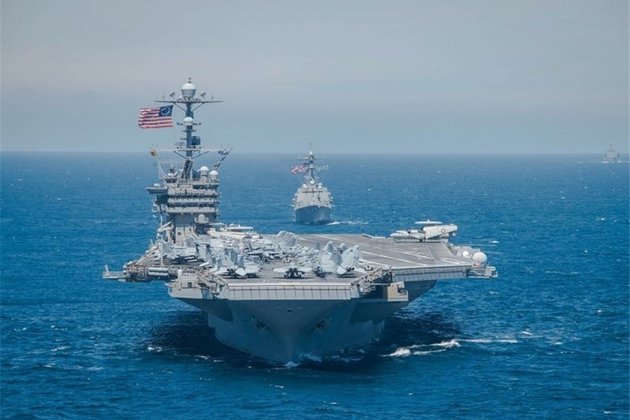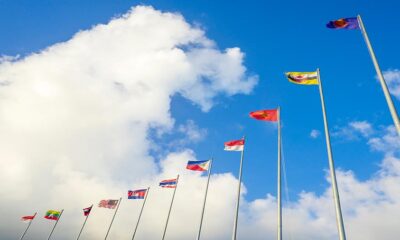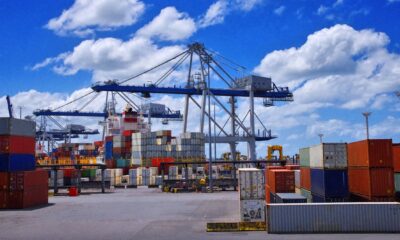Politics
Australia’s post-mining boom future still tied to Asia
Author: Tom Westland, East Asia Forum
Few countries have done so well out of China’s belated economic awakening as Australia, which has sated much of the People’s Republic’s voracious appetite for overseas iron ore and metallurgical coal. Supply struggled to keep pace with demand and the prices of the raw materials for Chinese growth shot up: this translated into an eyewatering increase in the Australian terms of trade. This has undeniably contributed strongly to the sunny economic conditions that have prevailed in Australia for much of the past decade.

But China’s growth is both slowing and changing character. Australia will continue to export resources to China — particularly energy, in the form of natural gas, with which Australia is well endowed. In the market for services it is evident that Australia — business as much as government — will need to think harder about its place in the Asian economic system.
As the boom winds down, two potentially serious problems are beginning to emerge: the consequences of the ‘Dutch disease’ effect (where natural resource development weakens manufacturing and other sectors) and the corrosion of institutional quality.
Australia’s macroeconomic institutions have managed the terms of trade shock with considerably more dexterity than at other times in the country’s economic history. During the first terms of trade boom since the floating of the dollar, inflation has remained extraordinarily well-behaved and growth has been stable. Its political institutions, on the other hand, have been strained.
An economic reorientation will be required for Australia to fashion a more mature place for itself in the Asian economy. This will mean developing a more dynamic services sector attuned to the needs of the middle class of Asia, a more capable and better-funded education system, and a more disciplined approach to building infrastructure. Australia should not look to compete with others in Asia but to position itself to complement production and economic activity in Asian supply chains.
An abundance of mineral resources has resulted in Australia’s relative isolation from the value chains that are dispersing different production stages across Asia. A large share of Australian exports is of unprocessed minerals, while the import content of Australian exports is a relatively feeble 15 per cent. This is not necessarily a bad thing, nor will Australia cease exporting natural resources. The mining industry will remain one of Australia’s most redoubtable export industries. Coal and iron ore will continue to constitute an important part of the nation’s export structure, while natural gas (in increasing demand in Japan as well as in China) and rare earths will complement the more traditional mineral exports.
Yet there is something of a mismatch between the destination of Australian resource exports, which are mainly sent to countries in the Asian region, and its service exports, which are still largely purchased by Australia’s English-speaking partners. It seems only natural that Australia’s service industries should attempt to secure a place for themselves in the production chains of an increasingly integrated Asian region.
One area in which Australian services already have a foothold is tertiary education. Institutions of higher learning in Australia already ‘export’ strongly to Chinese and other Asian students, with export income of about AU$15 billion in 2012–13, but both earnings and Australia’s share of international students have been declining in recent years. Earnings from Indian and Korean students in 2012-13 were down substantially on the preceding year (by 14.6 per cent and 12.7 per cent respectively).
Research collaboration with Chinese, Japanese and Indian academic researchers has been strong: indeed, much stronger than collaboration between Australian and Asian businesses. In 2010 only 4 per cent of Australian businesses collaborated on innovation with international partners: on this measure, Australia ranks 25th in the OECD. A fruitful avenue for businesses to pursue would be to draw on and learn from existing collaborations between Australian and Asian universities.
One achievement highlighted recently by the (now unjustly forgotten) Australia in the Asian Century White Paper is Australia’s program of large-scale immigration from Asian nations since the end of the discriminatory White Australia Policy. The proportion of the Australian population with Asian heritage is 12 per cent. Not only is multiculturalism enriching in a social and cultural sense (the basis upon which the policy is usually defended in Australia) but its contribution to Australia’s economic future could well be large. Migrants bring language skills and a familiarity with the societies and economies whose needs Australian businesses will have to meet. Relatively open borders are therefore an essential long-term macroeconomic policy.
A high migrant intake, however, throws into relief other public policy problems that must be dealt with. There are also unquestionable deficiencies with Australia’s stock of physical infrastructure: roads, ports and rail, among others. Numerous problems arise from the combination of very high rates of urbanisation and low density in cities. The cost of borrowing for the Australian federal government is attractively low, and need not deter it from spending money on high-return projects.
Given the costs of construction in a high-wage economy, governments (federal and state) have to be disciplined about project selection. It would also be useful to introduce transparent price signals to those using existing government-funded infrastructure.
In general, if there is a role of government in all of the above here, it is to provide the incentives and avenues to help society and business become more familiar with Australia’s neighbourhood in Asia.
Blessed by its resource endowments, Australia has prospered from the beginning of Chinese — and, more broadly — Asian prosperity. But it will have to think smarter and harder if it is to harvest the full range of economic possibility that has opened up, and will continue to expand, to its north.
Tom Westland is an editor with East Asia Forum at the Crawford School of Public Policy, The Australian National University.
This article appeared in the most recent edition of the East Asia Forum Quarterly, ‘The state and economic enterprise‘.
Read the rest here:
Australia’s post-mining boom future still tied to Asia
Politics
US Navy Carrier Conducts Exercises in South China Sea

TEHRAN (Tasnim) – A US Navy aircraft carrier conducted exercises in the contested South China Sea on Friday, the US navy said in a statement. –
A strike group led by the USS Ronald Reagan conducted flight operations and high-end maritime stability operations and exercises, the statement said, Reuters reported.”Integration with our joint partners is essential to ensuring joint force responsiveness and lethality, and maintaining a free and open Indo-Pacific,” US Navy Commander Joshua Fagan, Task Force 70 air operations officer aboard USS Ronald Reagan, was quoted as saying.The drill comes amid heightened tensions between the United States and China.
Washington has criticized Beijing over its novel coronavirus response and accuses it of taking advantage of the pandemic to push territorial claims in the South China Sea and elsewhere.The United States has long opposed China’s expansive territorial claims in the South China Sea and has sent warships regularly through the strategic waterway.China has objected to such exercises and said the US rejection of its claims in the South China Sea has raised tension and undermined stability in the region.China claims nine tenths of the resource-rich South China Sea, through which some $3 trillion of trade passes a year. Brunei, Malaysia, the Philippines, Taiwan and Vietnam have competing claims.
Politics
How China is using tourism for geopolitical goals
The Chinese government has a degree of leverage over its tourists that other governments do not enjoy. Many Chinese tourists are new to international tourism and have limited international language abilities

Decades of astonishing economic growth have given China new tools for extending its influence abroad and achieving its political goals.
(more…)












